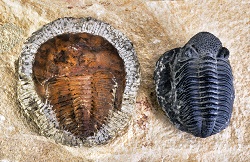Tumour behaviour could explain why animals diversified on Earth
The rapid appearance of a wide range of animals about 543 million years ago – when life evolved from simple, single-celled forms into more complex organisms – has intrigued scientists for over two centuries. The Cambrian period, which marks the fossil debut of virtually all major animal groups, including the ancestors of vertebrates, saw an incredible diversity of life emerge. This event is called the ‘Cambrian explosion' as it occurred within a geologically short period of time – just a few tens of millions of years. Prior to this burst of evolution, life on Earth was dominated by microbes for roughly four billion years. What triggered this biological phenomenon isn’t exactly clear, although one explanation has been associated with the increase in atmospheric oxygen that was thought to fuel the growth of more complex body structures. Researchers from Lund University and University of Southern Denmark, partly supported through the EU’s OXYGEN project, challenged this hypothesis. They offered another angle to explain the development of multicellularity. The team’s findings were published in 'Nature Ecology & Evolution'. Using clues from the field of tumour biology, the researchers tackled the long-standing question of why animals developed so late and dramatically. They looked at stem cells, whose defining hallmark is their ability to self-renew, and tested whether the same biological mechanisms exploited by many tumours – to maintain stem cell properties – could also be relevant to the success of animals in the Cambrian explosion. Importance of oxygen levels Stem cells, which are capable of turning into different types of body cells, require specific oxygen levels, as do cancer stem cells responsible for tumour growth. In particular, stem cells don’t like too much oxygen ‘because it causes them to lose their ability to make new cells,’ as pointed out in an article by one of the team members who contributed to the research. Low oxygen concentrations, or hypoxia, affect tumour growth, and as another member of the research team suggested, ‘the stem cells therefore have various systems for dealing with the effects of both oxygen and oxygen shortage, which is clear in the case of tumours.’ The researchers argued that ‘these systems involve a protein that can ‘fool’ cells [to] act as if the setting was hypoxic. This can also fool cells to get stem cell-like properties.’ By examining how tumours can maintain stem cell properties even when surrounded by high oxygen concentrations, the researchers supported their idea that multicellular organisms evolved a way to cope with lots of oxygen. As one of the researchers explained, ‘it wasn’t until animals developed these proteins that they could take advantage of the oxygen and start diversifying.’ The OXYGEN (How oxygen regulates the structure and function of microbial ecosystems) project, which ended in 2016, was designed to develop and use high-sensitivity oxygen-detection systems to explore how oxygen regulates the metabolism of aerobic and anaerobic organisms in experimental systems and in nature. Using these new oxygen-sensing technologies, the researchers considerably advanced their understanding of the oxygen dynamics in oxygen-minimum zones of the world’s ocean, and also found that microbes in nature are well adapted to extremely low oxygen concentrations. For more information, please see: OXYGEN
Countries
Denmark



